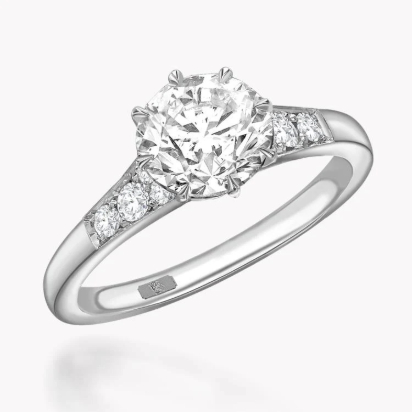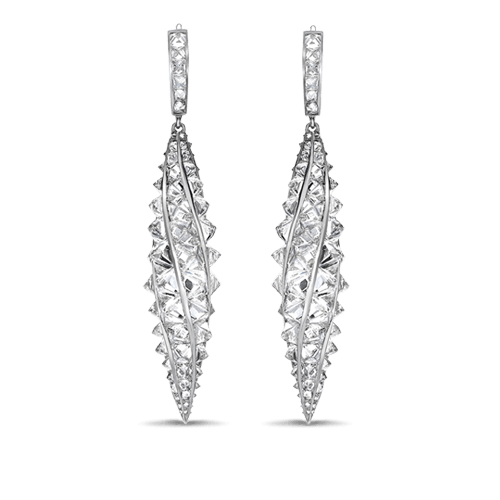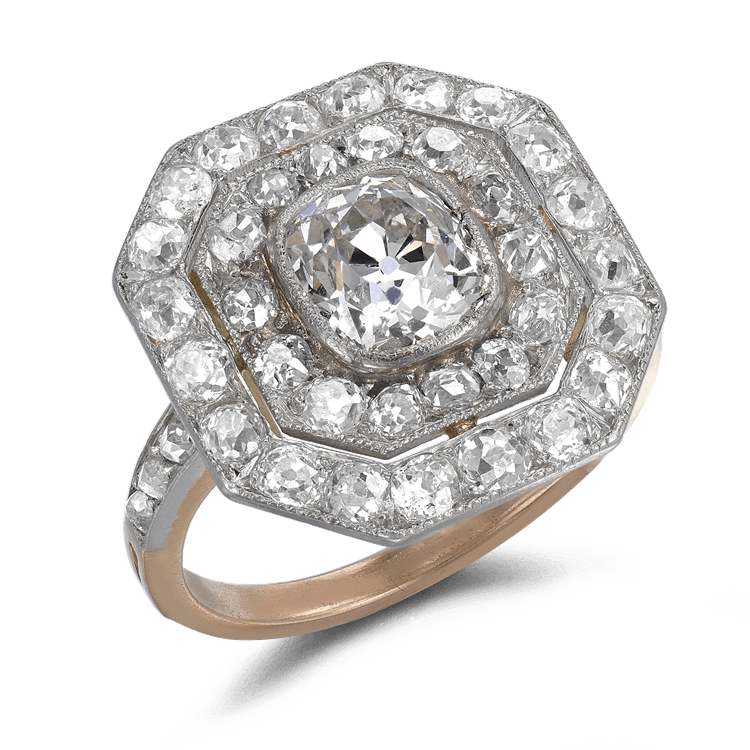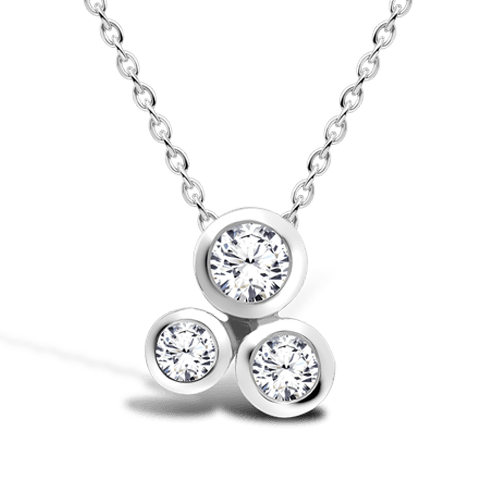The Diamond Guide: Selecting the Perfect Diamond
How do you choose the perfect diamond? There are a host of factors to consider when buying a diamond, from the type of diamond to the 4Cs—cut, colour, clarity, and carat—to the diamond's shape, certification, and ethical diamond sourcing. Our diamond guides shed light on the art of selecting your perfect diamond.
.jpg)
The Different Types of Diamonds
Diamonds come in various types based on their origin, internal structure, and attributes.
Natural diamonds form deep within the Earth's mantle over millions of years. They are categorised into types such as:
- Ia (with nitrogen impurities)
- Ib (with isolated nitrogen atoms, often blue)
- IIa (very pure, colourless)
- IIb (with boron, sometimes blue or grey)
At Pragnell, all of our diamonds are 100% natural. Our gemmologists look through thousands of diamonds but select only those they consider to be the finest to form part of our diamond jewellery collection, so you can be assured of the highest quality.
Diamond Quality: What are the 4Cs?
Cut, colour, clarity, and carat—learn more about these and how they can help you choose your perfect diamond.
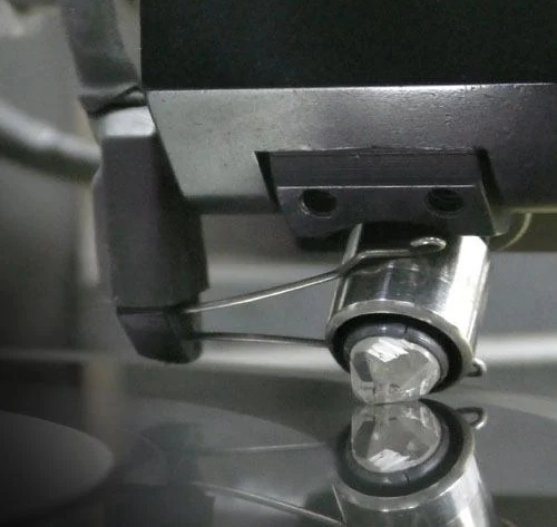
Cut
The cut of a diamond is one of the most important factors that determine its beauty and brilliance. It refers to how well a diamond's facets are proportioned, aligned, and finished. A well-cut diamond reflects and refracts light in such a way that it displays maximum sparkle and brilliance. Here are some key points you should know about diamond cut:
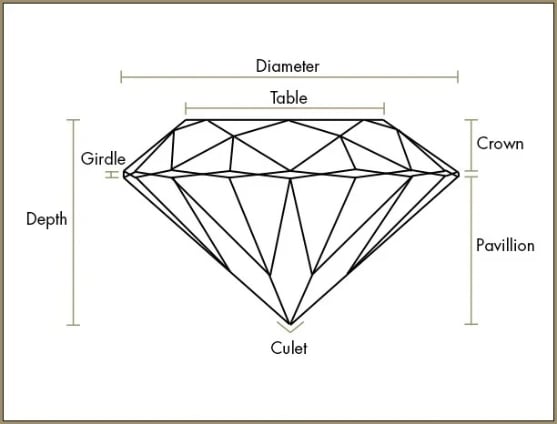
Diamond Anatomy
Key components of a diamond's cut include:
- the table (the flat top surface)
- the crown (the upper section above the girdle)
- the girdle (the middle part encircling the diamond)
- the pavilion (the lower section below the girdle)
- the culet (the pointed or flat tip at the bottom)
Facets and Proportions
A standard round brilliant diamond has 57 or 58 facets, each strategically placed to optimise light reflection and refraction. The proportions of these facets, including angles and symmetry, are crucial to how well the diamond interacts with light.
Cut Grades
The Gemological Institute of America (GIA), a renowned authority in gemology, grades diamond cuts based on factors like brightness, fire, and scintillation. The grades range from "Excellent" to "Poor," with variations in between.
Brilliance, Fire, and Scintillation
Brilliance refers to the white light reflected back to the viewer's eye. Fire, also known as dispersion, is the colourful flashes of light that occur when light is refracted through the diamond. Scintillation refers to the sparkle and pattern of light and dark areas that result from the movement of the diamond or light source.
Fancy Shapes
While the classic round brilliant cut is the most popular, there are many other diamond shapes like princess, emerald, pear, oval, marquise, and more. Each shape has its own unique cut considerations.
Depth and Table Percentage
The depth and table percentage refer to the depth of the diamond's pavilion and the size of the table in relation to the diameter of the diamond. These percentages can influence how well a diamond interacts with light.
Cut and Carat Weight Trade-off
Cutting a diamond for maximum brilliance might involve sacrificing some carat weight. Finding the right balance between cut quality and carat weight can affect the diamond's appearance and cost.
Tip: When choosing a diamond, a well-cut diamond can make a lower-grade stone look more beautiful, while a poor cut can diminish the brilliance of even a high-quality diamond. It is recommended to prioritise cut quality when selecting a diamond, as it has the most noticeable impact on its visual appeal.
Read more about diamond cut and discover antique diamond cuts and customised diamond cuts.
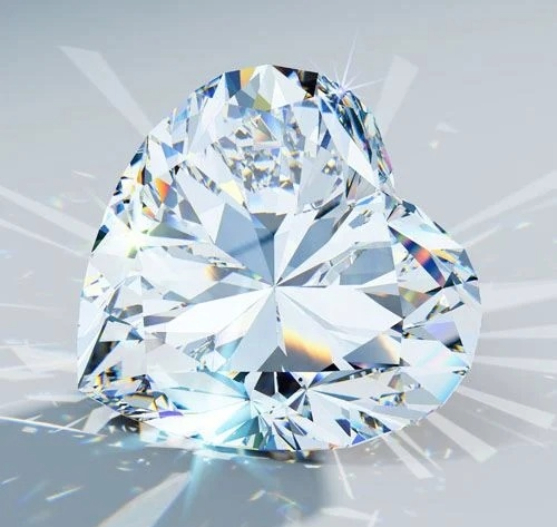
Colour
Diamond colour is another crucial factor that affects a diamond's appearance and value. The colour of a diamond refers to the presence or absence of colour in a white diamond. The Gemological Institute of America (GIA) grades diamond colour on a scale from D (colourless) to Z (light yellow or brown). Here's what you should know about diamond colour:
Tip: While diamond colour is an important consideration, it's often less noticeable to the naked eye than factors like cut and clarity. The right balance of these factors depends on your personal preferences and budget.
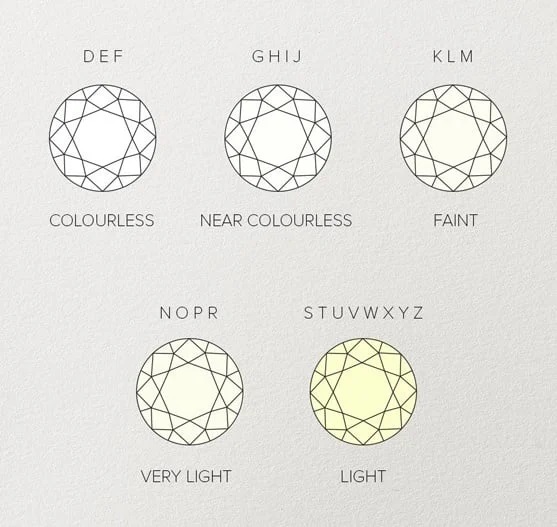
Colour Grading Scale
The GIA colour grading scale starts with D (colourless) and goes through various letters to Z (light yellow or brown). The progression from colourless to light yellow or brown is often subtle and can be challenging to detect with the naked eye.
Price Impact
Generally, the higher the colour grade, the more valuable the diamond. Colourless and near-colourless diamonds tend to command higher prices due to their rarity and visual appeal.
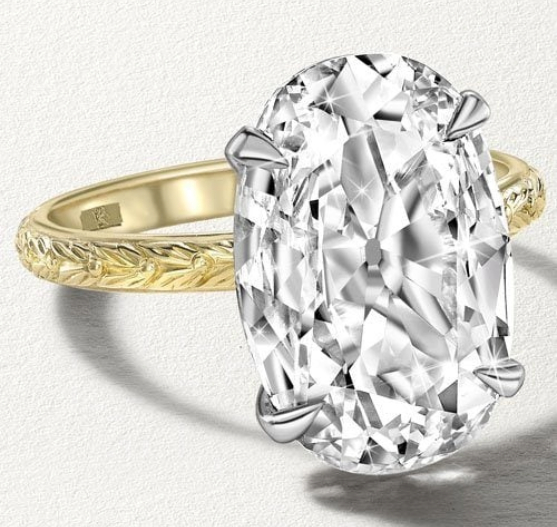
Clarity
Diamond clarity refers to the presence or absence of internal and external imperfections, known as inclusions and blemishes, in a diamond. These natural features are formed during the diamond's growth process and can affect its overall appearance and value. Here's what you should know about diamond clarity:
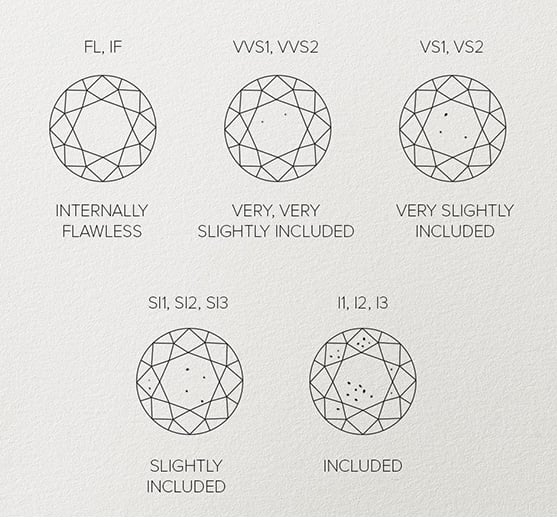
Clarity Grading Scale
The Gemological Institute of America (GIA) grades diamond clarity on a scale that ranges from "Flawless" (no internal or external imperfections visible under 10x magnification) to "Included" (imperfections visible to the naked eye).
The grades include: Flawless (FL), Internally Flawless (IF), Very Very Slightly Included (VVS1 and VVS2), Very Slightly Included (VS1 and VS2), Slightly Included (SI1 and SI2), and Included (I1, I2, and I3).
Inclusions and Blemishes
Inclusions are internal imperfections, such as crystals, feathers, or clouds, that are trapped within the diamond during its formation. Blemishes are external imperfections, like scratches, nicks, or polish marks, that occur after the diamond has formed. Both inclusions and blemishes can affect the diamond's brilliance, transparency, and overall beauty.
Price Impact
Generally, diamonds with higher clarity grades command higher prices. However, the price increase might not always translate into a noticeable difference in appearance, especially when viewed without magnification.
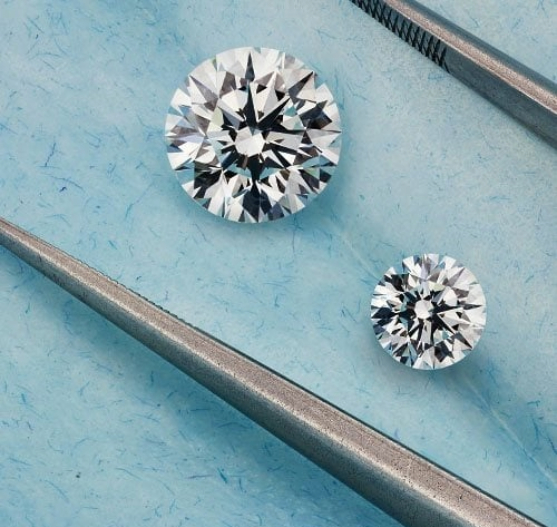
Carat
Diamond carat is a measurement of a diamond's weight, not its size. Here's what you should know about diamond carat:
Carat Weight
The carat is a unit of measurement for gemstones, including diamonds. One carat is equal to 200 milligrams. Carat weight is often associated with a diamond's size, but it's important to note that two diamonds with the same carat weight can appear differently in size due to differences in their proportions.
Carat Points
Diamonds are often measured in carat points, where one carat is divided into 100 points. For example, a 0.75-carat diamond is equivalent to 75 points.
Price and Rarity
Generally, larger diamonds are rarer and command higher prices per carat. This is because larger rough diamonds are less common in nature. However, prices can increase significantly for diamonds that hit "magic numbers" like 1.00 carat or 2.00 carats, due to consumer preferences.
In addition to the 4Cs, there are other factors to consider when buying a diamond, such as its shape and whether it is ethically sourced.
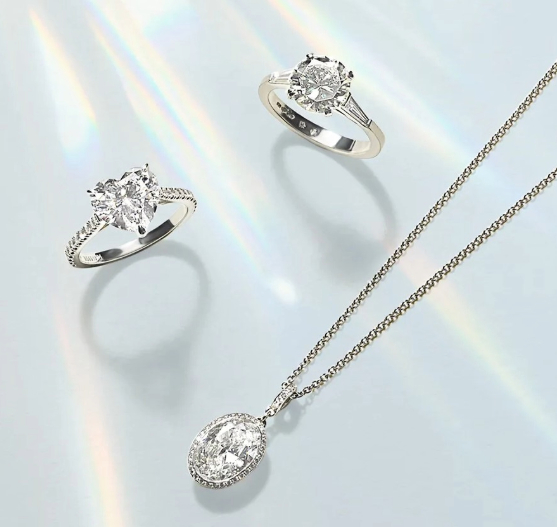
Diamond Shapes
Diamond shape refers to the geometric outline of a diamond as viewed from the top. Many different diamond shapes are available, each with its unique characteristics and aesthetic appeal. The most popular diamond shapes include round brilliant, princess, and oval.
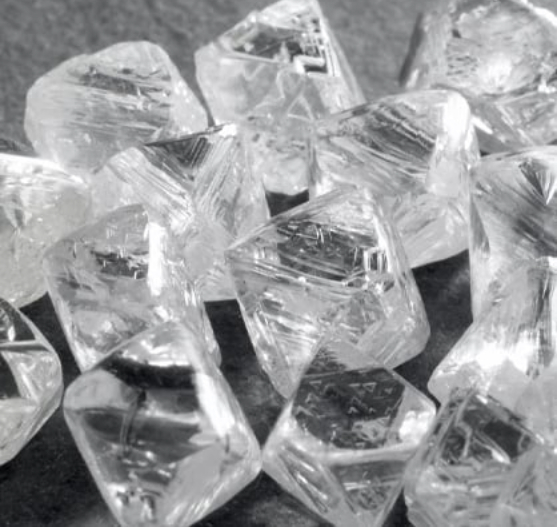
Ethically Sourced Diamonds
Ethically sourced diamonds refer to diamonds that have been extracted, processed, and traded in a manner that prioritises social and environmental responsibility, as well as fair labour practices. These diamonds are mined and brought to market while considering the welfare of local communities, workers, and the environment.
At Pragnell, all of our diamonds are responsibly and ethically sourced and are hand-selected by our expert gemmologists.
Diamond Certification
Finally, when purchasing a diamond, it is important to read its certification. Every certified diamond comes with a unique report that lists its carat weight, cut, colour, and clarity grading, along with the precise measurements of that particular stone.
The report includes a diagram of the diamond on which the size, shape and placement of any inclusions or blemishes are marked, along with information about the diamond’s polish, symmetry and fluorescence. This certificate is a guarantee that the stone is a natural diamond, and that it has been cut and polished in line with industry standards.
Diamonds can look the same on paper, but in reality, they can be quite different. At Pragnell, our gemmologists sift through thousands of diamonds, analysing each stone one at a time to find those whose quality and beauty reflect above and beyond their grading; the vast majority of the diamonds we use are certified certified by GIA, IGI or HRD.
-(1).jpg)
Buying a Diamond in a Showroom
Buying a diamond in a Pragnell showroom offers a tactile and personalised experience that allows our customers to appreciate the beauty and brilliance of diamonds up close.
We offer a curated collection of diamond jewellery presented in elegant displays that showcase various cuts, colours, and sizes. Our expert salespeople are available to guide you through the selection process and answer questions about diamond quality, characteristics, and the "4Cs."
The showroom environment enables customers to compare diamonds side by side, examine their uniqueness, and choose the perfect stone based on their preferences. Additionally, seeing the diamond's sparkle in person allows for a better understanding of its brilliance and fire.
Overall, purchasing a diamond in one of our showrooms offers an opportunity to make a well-informed decision in a relaxed and welcoming atmosphere.
.jpg)
Buying a Diamond Online
Buying diamond jewellery online offers convenience and a vast array of options at your fingertips. It allows you to explore a wide range of diamonds and jewellery pieces from the comfort of your home without the constraints of physical showroom opening hours.
At Pragnell, we provide detailed information about each diamond's cut, colour, clarity, and carat weight, along with high-resolution images and sometimes even videos to help you make an informed decision.
Our website has secure payment options, and if you buy online, you can return or exchange the piece within 14 days if it doesn't meet your expectations.
Why Choose a Diamond from Pragnell?
Every Pragnell diamond is hand-selected by a member of the Pragnell family.
As a sixth-generation, family-owned British jeweller with a rich and royal heritage, we have built strong and trusted relationships with renowned diamond-cutting houses.
Our wealth of experience and education enables us to work with cutters to identify diamonds that perform beyond the certification they have been given. Each diamond is assessed on its performance, which is a combination of three components: scintillation, fire, and brilliance. These are what give the diamond its super sparkle.
By assessing each diamond in this way, we are able to select the best performing diamonds for the best value, savings which are then passed on to our customers.
Frequently Asked Questions
Below are the answers to our most commonly asked questions. Should you want to find out more please feel free to Contact Us and begin your Pragnell experience.
View By Category
Explore a selection of pieces from across the Pragnell range
Jewellery CLP Page
Contact us